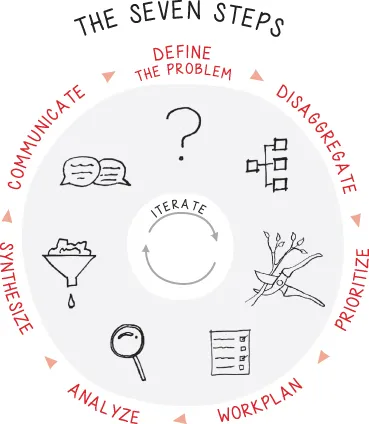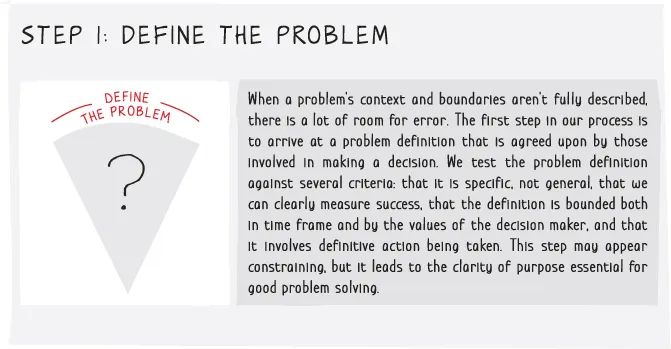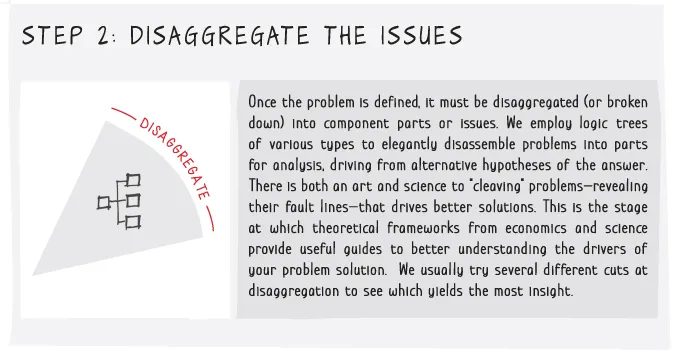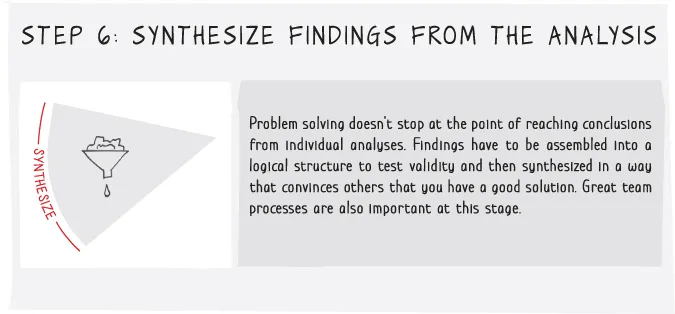
Bulletproof Problem Solving
The One Skill That Changes Everything
Charles Conn, Robert McLean
- English
- ePUB (adapté aux mobiles)
- Disponible sur iOS et Android
Bulletproof Problem Solving
The One Skill That Changes Everything
Charles Conn, Robert McLean
À propos de ce livre
Complex problem solving is the core skill for 21 st Century Teams
Complex problem solving is at the very top of the list of essential skills for career progression in the modern world. But how problem solving is taught in our schools, universities, businesses and organizations comes up short. In Bulletproof Problem Solving: The One Skill That Changes Everything you'll learn the seven-step systematic approach to creative problem solving developed in top consulting firms that will work in any field or industry, turning you into a highly sought-after bulletproof problem solver who can tackle challenges that others balk at.
The problem-solving technique outlined in this book is based on a highly visual, logic-tree method that can be applied to everything from everyday decisions to strategic issues in business to global social challenges. The authors, with decades of experience at McKinsey and Company, provide 30 detailed, real-world examples, so you can see exactly how the technique works in action. With this bulletproof approach to defining, unpacking, understanding, and ultimately solving problems, you'll have a personal superpower for developing compelling solutions in your workplace.
- Discover the time-tested 7-step technique to problem solving that top consulting professionals employ
- Learn how a simple visual system can help you break down and understand the component parts of even the most complex problems
- Build team brainstorming techniques that fight cognitive bias, streamline workplanning, and speed solutions
- Know when and how to employ modern analytic tools and techniques from machine learning to game theory
- Learn how to structure and communicate your findings to convince audiences and compel action
The secrets revealed in Bulletproof Problem Solving will transform the way you approach problems and take you to the next level of business and personal success.
Foire aux questions
Informations
Chapter One
Learn the Bulletproof Problem Solving Approach

The Bulletproof Problem Solving Cycle








Prepare for an Avalanche of Trees!
- Provide a clear visual representation of the problem so that everyone can understand the component parts.
- Done correctly, they are holistic in the sense that everything relevant is captured in the tree.
- Lead to clear hypotheses that can be tested with data and analysis.
Let's Start with Some Case Studies
- Is Sydney airport capacity adequate for the future?
- Should I install solar panels on my roof now?
- Where should I move?
- Should a start‐up raise its prices?
- Should I support a K–12 school education levy in my town?